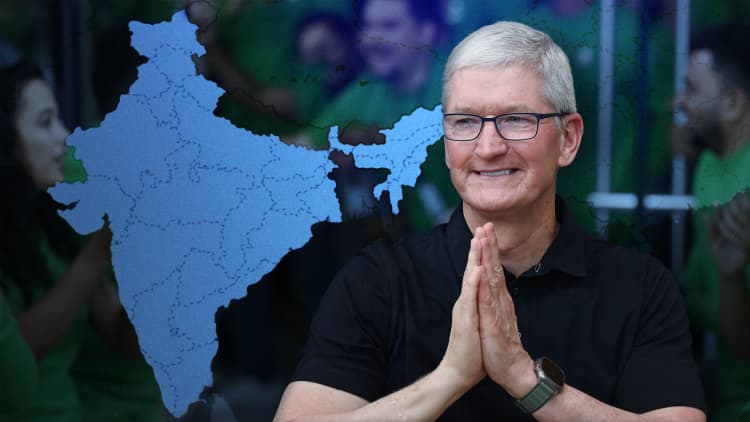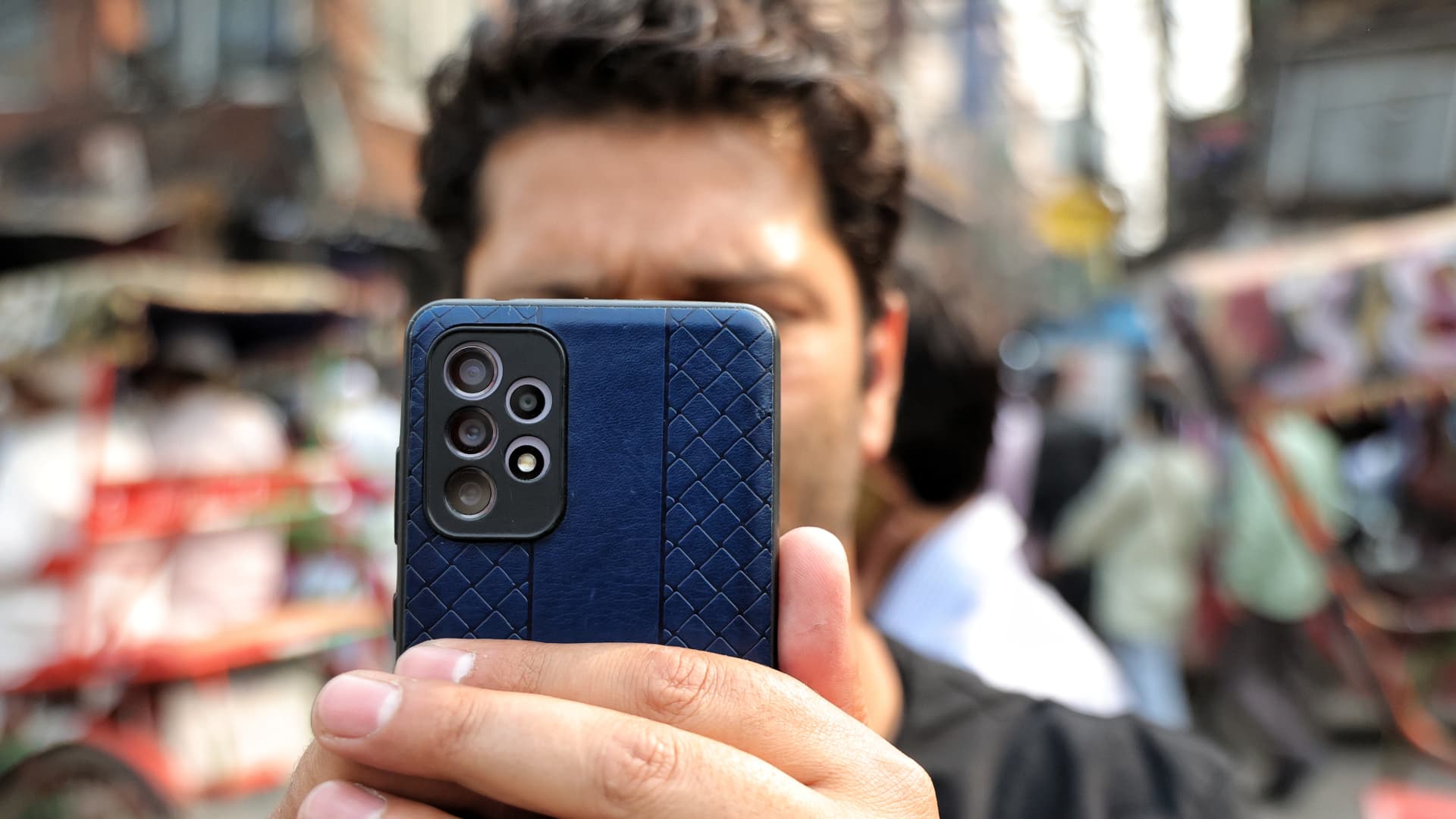A man captures a photo using a Samsung smartphone with multiple cameras in Old Delhi, India on October 28, 2022.
Nasir Kachroo | NurPhoto | Getty Images
A report by Canalys reveals that India’s smartphone market experienced stabilization in the second quarter, with 36.1 million units shipped. This represents a 1% decline compared to the previous year, which is a significant improvement from the 20% drop in the first quarter. Shipments also declined by 27% and 6% in the fourth and third quarters of 2022, respectively.
“With a challenging few quarters behind us, the market has finally gained momentum heading into the second half,” stated Sanyam Chaurasia, an analyst at Canalys. “During Q2, there was a slight improvement in macro indicators, including increased manufacturing output and reduced inflation rates.”
The market saw an 18% growth compared to the previous quarter, attributed to improved inventory levels and a better business environment.
“Smartphone vendors are adapting to the dynamic business environment and focusing on long-term sustainability,” added Chaurasia.
According to Canalys, Samsung maintained its dominance in the second quarter, capturing approximately 18% of the market share with 6.6 million shipments. Vivo followed closely with 6.4 million phone shipments, while Xiaomi ranked third with 5.4 million shipments.

According to Varun Mishra, senior analyst at Counterpoint Research, India is already the world’s second-largest smartphone market and is expected to gain 300 million new internet users. Chaurasia predicts that companies will promote their affordable 5G portfolios during the Cricket World Cup in India in October.
However, Chaurasia also acknowledged potential risks, such as uncertainty related to the monsoon season that could impact demand. He mentioned that the government aims to boost demand ahead of national elections next year.
Physical sales still matter
Canalys highlights that Indian consumers prefer buying phones offline, which has influenced retail strategies in the country. For instance, Apple opened two retail stores in Delhi and Mumbai in April, while Samsung announced plans to establish 15 premium experience stores across India in major cities like Delhi, Mumbai, and Chennai by the end of this year.

“There has been a surge in offline consumer demand in both rural and urban areas due to strong retail consumer preference,” explained Chaurasia. “On the other hand, online demand has been inconsistent and mainly driven by urban consumers during e-commerce sales periods.” He added that vendors are striving for a better balance between offline and online sales.
Denial of responsibility! VigourTimes is an automatic aggregator of Global media. In each content, the hyperlink to the primary source is specified. All trademarks belong to their rightful owners, and all materials to their authors. For any complaint, please reach us at – [email protected]. We will take necessary action within 24 hours.


